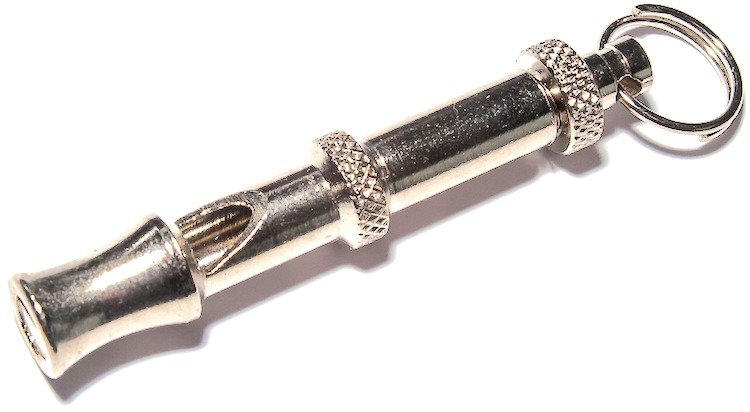
If you could hear what a dog hears, it would be like having a superpower.
Having a dog’s level of hearing would open up a whole new spectrum of sounds that humans don’t currently hear and change the way we think about music.
For example, imagine a piano that played to the full limits of human hearing …
To make this piano would require adding another 28 keys to the right-hand-side of the keyboard. But to match the full extent of a dog’s hearing, we’d need to add 52 keys.
That’s a lot of music waiting to be written right there!
Dog Hearing vs. Human
People like to talk to one another. We use a relatively limited range of sounds and frequencies.
However, dogs use their hearing not to chatter, but to listen for prey and check for danger. Their hearing is tuned to high-pitched rustlings and squeaks.
This makes a whole lot of sense when you think of how your dog can hear a treat bag being opened from the next room. Of course, this is an oversimplification of why dogs and people hear differently, but it gives an idea of why the 2 species differ.1
And for the trivia lovers among you:
- Human hearing is sharpest at 1,000–4,000 Hz.
- Men speak at around 120 Hz and women at around 250 Hz.
- A whisper clocks in at just 20 dB.
So what about dogs?
Dog Hearing Frequency Compared With Human
Let’s put some numbers on how well-tuned a dog hearing is, compared with our limited ear.
- Dog hearing: 67 Hz–45,000 Hz
- Human hearing: 20 Hz–20,000 Hz
- Cat hearing: 48 Hz–85,000 Hz (more on cats here)
While people have a slight edge with dull, low sounds, dogs are far ahead when it comes to high-pitched noises (think of the squeaking of a mouse).
But there’s more to hearing than frequency …

Frequency vs. Decibels
There are 2 parts to sound:
- The frequency of the sound wave: This governs whether a sound is low-pitched (think bass) or high-pitched (think squeaky). Frequency is measured in hertz (Hz).
- The loudness of the sound: Measured in decibels (dB), this is a measure of how soft or loud the sound is.
This is a subtle but important difference.
For example, a dog’s hearing is all around more sensitive than a person’s. Dogs can hear quieter sounds than we can, as well as a wider frequency of noises.
This means a dog can hear sounds that are too quiet for the human ear to detect. Dogs can hear sounds of a volume as low as 5–15 dB (note that a human whisper is 20–30 dB).
Was YOUR Pet Food Recalled?
Check Now: Blue Buffalo • Science Diet • Purina • Wellness • 4health • Canine Carry Outs • Friskies • Taste of the Wild • See 200+ more brands…

What Sound Frequency Do Dogs Hate?
High-Decibel Noises (85+ dB)
A jet engine or a jack hammer hurts human ears because it is loud (130+ dB). With dog hearing being more sensitive, it makes sense that quieter noises (85+ dB) hurt canine ears.
If you’ve ever visited an animal shelter, you know how brain-rattlingly noisy they can be. The sound of all those barking dogs comes in at around 85–110 dB and can have real welfare implications for the animals.2
Indeed, noise stress in shelter dogs is something that’s now recognized. Fortunately, good animal shelters are trying hard to make kennels a quieter place and alleviate the sound discomfort of barking.

Ultrasonic Flea Collars and Dog Distress
Now here’s a thing. Ultrasonic flea collars are designed to repel fleas using an ultrasonic signal. These collars send out pulses of sound at around 30,000–50,000 Hz.
These collars may not work well in the first place, and one study showed that 73% of dogs wearing one of these collars showed signs of distress.1,3
Talk about throwing the baby out with the bathwater! By trying to deter those itchy parasites, you cause the dog discomfort. Not the best idea ever.
(For much better ways to control fleas on your pet, see our veterinarian-written expert guide.)
Ultra-High-Pitched Noises
If a sound is both ultra-high pitched and loud, this causes distress to a dog.
These noises to the top of the dog’s ability to hear can cause pain if they are loud enough. It’s like the difference between a referee blowing a whistle on the football field versus blowing that same whistle directly in your ear.
So, do high-pitched noises bother dogs? The short answer is yes, sometimes.
But here’s some hearing trivia for you: In a study of 4 different dog breeds, there was no difference in the dogs’ ability to hear high-pitched squeaks. It seems head size, body weight and the size of their eardrum all make no difference in how well the dogs hear.4
So if your Border Collie leaps to attention while your Pug seems a little hard of hearing, bear in mind it’s likely they both heard the same noise, but the Pug chose to ignore it!

What Sounds Can Dogs Hear That Humans Cannot?
Dog whistles or so-called “silent whistles” work by emitting a sound higher than the human ear can hear. A typical dog whistle emits a noise around 35,000 Hz (way above the human hearing limit of about 20,000 Hz).
But again, volume comes into the equation. Blow a dog whistle softly, and your dog may ignore it. But blow harder and it will cut through the ambient background noise to get the dog’s attention.
That said, some dogs take more notice of certain frequencies than others. It’s worth experimenting with a “tuneable” dog whistle and blowing at different frequencies to see which works best to get the dog’s attention.
How much better can a dog hear than a human? Well, here are some of the many sounds that dogs hear that people don’t hear:
- Bat echolocation sounds
- A wider spectrum of birdsongs
- Many insect chirps and clicks
- Also, on the Beatles album Sergeant Pepper’s Lonely Hearts Club Band, at the end of the track “A Day in the Life,” there’s a high-frequency sound that only dogs can hear
A Digression About the Dog Whistle
Have you ever wondered who invented the dog whistle?
That honor goes to a Victorian eccentric by the name of Sir Francis Galton.
He made the discovery, as he was researching human hearing, that dogs could hear higher sounds than humans.
To test the human ear, he developed a small brass whistle with an adjustable frequency. Presumably he got a bit bored with people, because he eventually tried his whistle out on dogs.
He discovered that dogs responded to much higher frequencies than did people. So Galton’s whistle, developed as a scientific instrument, become the very first dog whistle.
How Hearing Frequencies Are Tested in Dogs
Here’s a conundrum: How do you test what frequencies a dog can hear?
With human hearing tests, the subject pushes a button to signal when they’ve heard a sound.
But how do you explain that to a dog?
Tricky, very tricky. First, you must train the dog to push a button that dispenses a treat when they hear a sound.3
The scientific answer is a BAER test. The Brainstem Auditory Evoked Response test measures activity in the hearing center of the brain. This is the gold standard for testing a dog’s ability to hear … which is how we know newborn puppies are deaf. Their BAER response doesn’t develop until around 10–14 days of age.1

Dog Coat Color and Hearing
Is it an old wive’s tale that white dogs are deaf?
Actually, there’s quite a bit of truth in this.
Researchers from Louisiana State University looked at this in dogs.5,6 They used the BAER test to monitor the brain’s reaction to sound.
They found an increased risk of deafness (at birth) in:
- White
- Smokey merles (gray or blue hairs mixed with white)
- Roan (white or gray hairs mixed together)
- Piebald (white with spotting, such as the Dalmatian)
For example:
- 8% of Dalmatians are born deaf in both ears — and a startling 22% of Dalmatians are deaf in one ear.
- 20% of Bull Terriers with a white coat are born deaf, but the presence of color patches reduces this to just 1%.
Now here’s a thing. The gene that causes white coat and deafness also causes blue eyes. Thus, in blue-eyed Dalmatians, around half of them are born deaf.
Before we move on to the final section of this article, check out this video — and see if YOU have superhuman hearing:

How Do Dogs Hear High-Pitched Sounds?
Compared to humans, dogs have a larger part of the brain dedicated to hearing.
This allows dogs the eerie ability to hear thunderstorms many miles away and register sound too high for us to hear.
Those low-pitched sounds are processed in the anterior ectosylvian gyrus, while higher pitches activate the intermediate and posterior areas. Each ear triggers its own area in the left- and right-hand side of the brain.
And that’s the other thing about dogs …
Our canine companions have an amazing ability to localize and pinpoint a sound. This comes down to those wonderful earflaps controlled by muscles that allow each ear to move independently.
Just like 2 satellite dishes, they can focus the sound signal, providing 2 reference points so the brain can pinpoint where it came from. So all that adorable head tilting isn’t just about being cute — the dog is actually sussing out exactly which of your pockets the rustling treat bag is in.
Indeed, scientists believe a dog can pinpoint the source of a sound to within 4 degrees. The accuracy of that echolocation varies depending on how far apart the dog’s ears are.
References
- Beaver, Bonnie V., DVM, DACVB. Canine Behavior: A Guide for Veterinarians. Saunders. 1999.
- Garvey, Morgan et al. “Auditory Stress: Implications for Kenneled Dog Welfare.” Center for Animal Welfare Science at Purdue University. Dec. 2016. https://extension.purdue.edu/extmedia/VA/VA-18-W.pdf.
- Brown, C.R. “The Efficacy of Ultrasonic Pest Controllers for Fleas and Ticks.” Journal of the South African Veterinary Association 62, no. 3 (September 1991): 110–113. https://pubmed.ncbi.nlm.nih.gov/1770480/.
- Strain, George M., PhD. “How Well Do Dogs and Other Animals Hear?” Louisiana State University School of Veterinary Medicine. April 10, 2017. https://www.lsu.edu/deafness/HearingRange.html.
- Coren, Stanley, PhD, DSc, FRSC. “Your Dog’s Coat Color Predicts His Hearing Ability.” Psychology Today. July 10, 2012. https://www.psychologytoday.com/us/blog/canine-corner/201207/your-dog-s-coat-color-predicts-his-hearing-ability.
- Strain, George M., PhD. “Genetics of Deafness in Dogs” Louisiana State University School of Veterinary Medicine. April 4, 2017. https://www.lsu.edu/deafness/genetics.htm.
 This pet health content was written by a veterinarian, Dr. Pippa Elliott, BVMS, MRCVS. It was last reviewed June 4, 2019.
This pet health content was written by a veterinarian, Dr. Pippa Elliott, BVMS, MRCVS. It was last reviewed June 4, 2019. 

